As businesses scale, their human resources (HR) needs evolve in complexity. From recruitment and on boarding to compliance and employee engagement, the responsibilities of an HR team are multifaceted. However, not all organizations have the in-house capacity to effectively manage these tasks. Outsourcing HR capabilities offers a strategic solution, providing companies with access to specialized expertise while allowing them to focus on their core business functions.
Here’s why more companies are turning to outsourced HR services:
1. Cost Efficiency and Resource Optimization
Building and maintaining an in-house HR team can be costly, particularly for small and mid-sized businesses. Salaries, benefits, and continuous training for HR personnel add up. By outsourcing, companies can significantly reduce overhead costs while still gaining access to high-quality HR services. Instead of investing in full-time staff, businesses only pay for the services they need, whether it’s payroll management, employee benefits administration, or legal compliance.
2. Access to Expertise and Best Practices
HR is a highly specialized field, with constant changes in labor laws, compliance requirements, and best practices. Outsourcing HR allows businesses to tap into the expertise of HR professionals who are up-to-date with the latest regulations and trends. This ensures that companies remain compliant with legal requirements while adopting best practices in recruitment, retention, and employee development. Outsourced providers often have experience across multiple industries, bringing a wealth of knowledge that can be tailored to specific business needs.
3. Scalability and Flexibility
One of the biggest advantages of outsourcing HR functions is scalability. As a company grows, its HR needs will change. Outsourced providers offer the flexibility to scale services up or down depending on demand. Whether a company is expanding its workforce, entering a new market, or restructuring, outsourced HR solutions can adapt to changing business needs quickly and efficiently.
4. Focus on Core Business Activities
HR management, though crucial, is often not the core competency of most businesses. Outsourcing HR allows leaders and employees to focus on what they do best—growing their business. By offloading HR responsibilities to experts, companies can free up time and resources for strategic initiatives, product development, and customer service. This enables a sharper focus on business growth without sacrificing HR quality.
5. Mitigating Risks and Ensuring Compliance
HR compliance is an ever-evolving landscape. Labor laws and regulations frequently change, and non-compliance can lead to fines, lawsuits, or reputational damage. Outsourcing HR functions ensures that businesses stay compliant with the latest regulations in areas like employee classification, overtime pay, and workplace safety. HR outsourcing providers also offer risk management solutions, ensuring that companies can navigate complex issues like harassment claims, employee grievances, and terminations without exposing themselves to unnecessary risks.
6. Enhanced Employee Experience and Engagement
Outsourcing HR functions doesn’t just benefit employers; it can also enhance the overall employee experience. Many HR outsourcing providers offer comprehensive services that streamline onboarding, training, payroll, and benefits administration. With HR processes handled efficiently and professionally, employees are more likely to feel supported and engaged in their roles, which can lead to higher job satisfaction and retention rates.
7. Data-Driven HR Insights
Outsourcing providers often use advanced HR technologies to track and analyze employee data. This gives businesses data-driven insights into workforce trends, allowing them to make informed decisions about talent management, compensation, and organizational development. Having access to real-time analytics helps companies stay ahead in competitive labor markets by anticipating workforce needs and addressing issues before they escalate.
Conclusion: Outsourcing as a Strategic HR Solution
Outsourcing HR capabilities can be a game-changer for businesses looking to streamline operations, reduce costs, and improve employee satisfaction. With the ability to access specialized expertise, ensure compliance, and focus on core business activities, outsourcing offers flexibility and scalability that in-house HR teams often cannot match. As companies navigate an increasingly complex business environment, outsourcing HR functions can provide the tools and support needed to succeed.
Atlas HR Technologies
At Atlas HR Technologies, we offer a full range of outsourced HR services, from talent acquisition and compliance to employee engagement and payroll management. Our goal is to help businesses build strong, agile teams that can adapt to evolving market conditions while ensuring that HR processes run smoothly and efficiently.
Contact us today today to learn more about how we can support your accelerating business.


